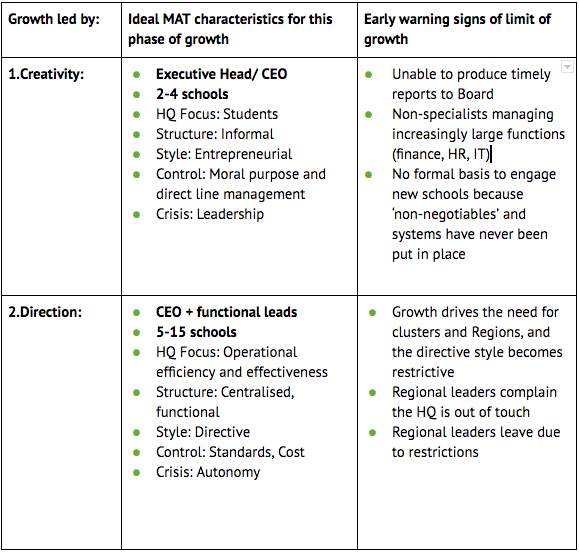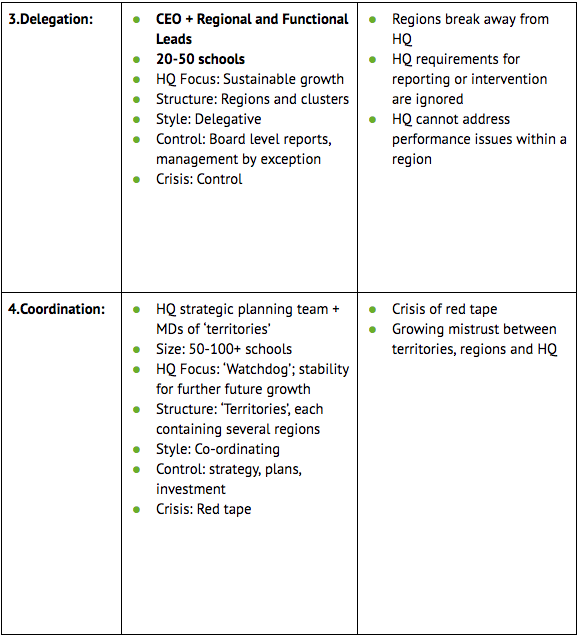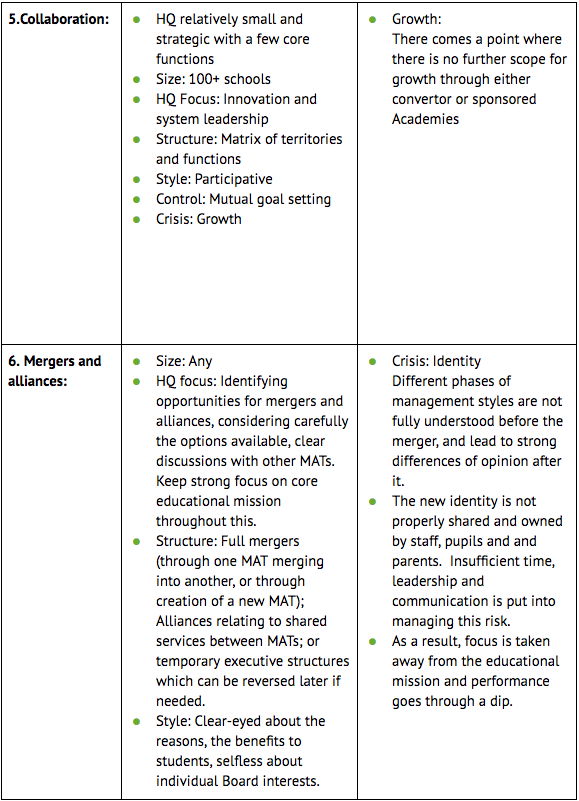Chris Kirk, Ex-Partner for Education at PwC, and formerly GEMS DfE. recently wrote about the 6 phases of MAT growth (and the crises that follow), explaining how as MATs grow in size and complexity the leadership style needs to flex, else crises can occur.
Below Chris has summarised what type of MAT fits into what phase of growth, as well as what early warning signs to look out for to avoid the 6 common crises he highlighted from occurring.
Summary: What to look out for, and what to consider doing about it



Five practical tips
- Discuss actively within the MAT leadership team and schools which phase you are in now, and where you might be headed. Self-awareness is a powerful tool.
- Consider whether any of the signs of crisis are present. Do these resonate with the phase of growth you are in? If so, you should consider what it would take to move to the next phase.
- Don’t be tempted to think you can easily cut out stages because a later one sounds more appealing. ‘Collaboration’ is naturally attractive in our sector, but it is only the appropriate HQ style in the last phase of growth because of all the systems and capabilities that were put in place before that. Otherwise you may simply be in the creative phase, but without the systems of the Directive phase that support sustainable growth. This doesn’t mean people don’t collaborate with each other until that stage – it is about the overall management style of the HQ.
- Like all models, this framework is a useful prompt for open discussion, but is not the whole truth. Whilst the Growth Model has long standing provenance in other industries, it has not been directly tested in the MAT sector (to my knowledge). You may find some parts of it useful, and that your MAT has characteristics of several different stages of growth.
- When facing clear signs that the current management style is becoming outgrown, don’t take it personally. This is a necessary part of growth, and as individuals we all have preferences and capabilities that suit us more to one phase than another. So be prepared to make the necessary changes for good of the organisation.







Leave a Reply